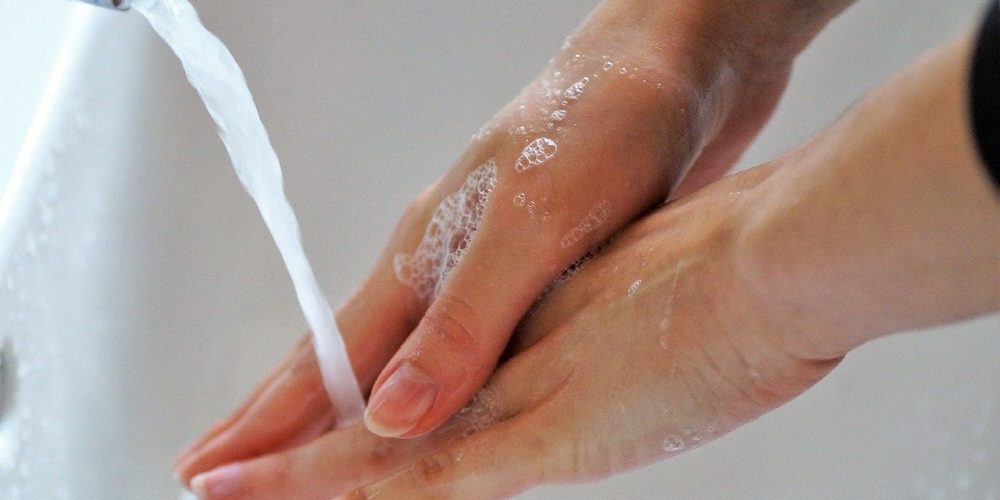
The World Health Organization’s WHO recommends washing your hands as a countermeasure for preventing COVID-19 infection, which is raging around the world. However, it is said that this natural hand washing was not realized even in the medical field until the mid-19th century.
It can be surprising that even in the 21st century, when advanced technology and medical technology are advancing, washing hands is still being encouraged. Nancy Tomes, professor of history at Stony Brook University, says experiencing an event like this with epidemic history feels like a Titanic passenger. He added that it feels like we are back in the 20th century, when tuberculosis or smallpox infections accounted for the majority of deaths and the public was encouraged to wash their hands.
In Islam, Judaism, and in some cultures, toilets have been a religious ritual for many years. However, the idea that diseases are spread by dirt or microbes on hands did not appear until the late 19th century. One expert points out that if there is anyone that can be called the father of the bathroom, it is Ignaz Philipp Semmelweis. Born in the Hungarian Kingdom, he faces the question of why the mortality rate of maternal diseases differs between obstetrics and gynecologists, even though he is in the same hospital when he worked at the Vienna General Hospital. The obstetrics and gynecology clinic, which has a high maternal mortality rate, also provided training for medical students, and practiced dissection as well as the work as an obstetrics and gynecology clinic.
In the first obstetrics and gynecology department, which also served as medical student education, it was routinely performed in order to dissect the corpse of a person who died of a disease, to dissect it, find the cause of death, and to help give birth for obstetrics and gynecology. At the time, doctors didn’t even have a habit of washing their hands, so the infection was transmitted to the mother through the doctor’s hands that dissected the body. Nevertheless, for a long time, this point has not been noticed.
The 1840s, when he worked there, were before the establishment of bacteriology by Louis Pasteur and Robert Koch. It is not known that microorganisms or bacteria cause various diseases. Instead, it is believed that the disease is spreading by poisons to inform them of decaying corpses or sewage, and doctors are said to have been taking measures to close the window tightly to prevent poisoning.
On one occasion, his friend, a doctor, injured his finger with a scalpel while dissecting the body. The doctor died of the same disease as the mother’s death, but Genmerweiss, who was aware of this process, contained the disease-causing particles in the empty body, and the particles were brought into the mother’s body through the doctor’s hand I thought it might be.
To test this hypothesis, he put in place rules for washing hands and instruments with calcium hypochlorite between the first gynecologists leaving the autopsy room and handling the patient. Before the experiment, the maternal mortality rate at the obstetrics and gynecology department was 18%, but as a result of mandatory disinfection before going to the delivery room, the mortality rate fell to 1%.
Despite his remarkable achievements, unfortunately, his theory that diseases are transmitted through doctors’ hands is not widely accepted and faces great backlash. The reason Genmerweiss’s theory was rejected was that there was no concept of people accepting themselves as a walking chalet. Vienna doctors were insulted by the theory that doctors’ hands were not clean and spread disease to patients because the majority of them were of middle or upper class and thought they were cleaner than the working class.
Discouraged, he was weakened and died in a mental hospital sent in 1865. The term Semmelweis reflex, which refers to the tendency to reject new facts that do not fit the conventional wisdom, and the difficulty to accept facts that cannot be explained by common sense, is a fact that his theory was not understood by doctors who believed in the existing theory. It comes from.
About 40 years after he published this theory, the medical community had a deeper understanding of bacteria, and various bacteria that cause disease were discovered. The concept of hygiene changes drastically, and doctors wash their hands in earnest. Joseph Lister, a British surgeon, became a pioneer in disinfecting surgery by announcing the effects of disinfecting toilets and surgical instruments.
Also, around the turn of the 19th to the 20th century, a large-scale public health campaign to prevent tuberculosis infection was launched. The tuberculosis campaign was aimed at both adults and children, and it was an opportunity to teach young children the rules to wash their hands and keep them clean. People became afraid of shaking hands and kissing when they learned that germs were attached to their mouth, skin, hair and beard. It is said that the shaving of young people and the fear of attaching bacteria were partly affected. It was also at this time that food was individually packaged and sold.
However, as public health awareness has risen to some extent, the infection itself decreases, and antibiotics that are effective against infection have been developed, the public health crisis consciousness among people has been blurred. Since then, there have been periods when hygiene concepts have regularly increased, such as when sexually transmitted diseases increased in the 1970s, but hand washing was not very important until the corona 19 epidemic. A 2009 study found that only 69% of women and 43% of men wash their hands after urinating. It is said that only 7% of women and 10% of men wash their hands before meals.
One expert investigated how effective handwashing was in the infectious epidemic in 2018, and found that the risk of influenza infection was 4 minutes compared to the group who did not use the bathroom well and the group who went to the bathroom 5-10 times more often than usual (for handwashing). It is said that it was found to decrease to 1.
At a time when a new infection pandemic for which treatment and effective medicinal ingredients have not been identified, thorough use of the toilet may be the only countermeasure. It is a non-pharmaceutical measure that can be easily implemented in the absence of drugs or vaccines. Washing your hands is simple and fast, and it doesn’t cost anything. You should wash your hands with soap before touching your mouth, nose and eyes. Related information can be found here .


















Add comment